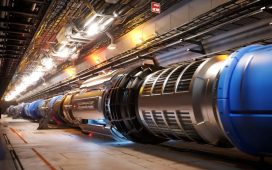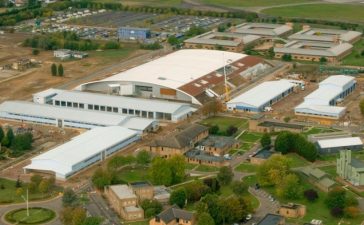IBM’s quantum computer, London. — Image: © Tim Sandle
The manipulation of neutral atoms by light is one of the most important scientific discoveries in the field of quantum physics in the last three decades. Researchers show that increasing the number of trapped atoms will enable solutions for more complex use cases, such as optimization problems and quantum simulations of intricate systems.
The company Pasqal has successfully loaded over 1,000 atoms in a single shot within their quantum computing setup. This is seen by the industry as representing a significant leap towards scalable quantum processors.
Pasqal is a Quantum Computing company that builds quantum processors from ordered neutral atoms in 2D and 3D arrays.
This included the successful trapping of 1,110 atoms within 2,000 traps and with demonstrating D atom-by-atom rearrangement of an 828-atom target array using optical tweezers.
The milestone further demonstrates the feasibility of large-scale neutral atom quantum computing and enhances the potential to solve complex optimization problems and quantum simulations.
In Pasqal’s quantum computing architecture, these atoms are confined and manipulated using electromagnetic fields. The internal energy states of these atoms serve as the quantum states of the qubits, which are manipulated to perform quantum operations and execute quantum algorithms.
The importance of the work is demonstrated as the successful trapping of single rubidium atoms in large arrays of optical tweezers, comprising up to 2,088 sites, within a cryogenic environment at a temperature of 6 Kelvin.
This represents one of Pasqal’s latest feats in quantum computing. This achievement involves innovative optical designs that combine ultra-high-vacuum-compatible microscope objectives at room temperature with windowless thermal shields, ensuring efficient trapping at cryogenic temperatures. In an industry first, Pasqal demonstrated atom-by-atom rearrangement of an 828-atom target array using moving optical tweezers controlled by a field-programmable gate array (FPGA).
This large-scale trapping of atoms is essential for building scalable quantum processors capable of solving complex problems efficiently. As the number of qubits increases, so does the computational power and the range of problems that can be tackled using quantum algorithms. The ability to trap and manipulate over 1,000 atoms represents a significant advancement towards creating quantum processors that can address problems currently beyond the abilities of classical computers.
In terms of the research significance, this should lead to enhanced scalability, thus paving the way for quantum processors with over 1,000 qubits, with future targets of 10,000 qubits by 2026-2027.
The draft research paper is titled “Rearrangement of single atoms in a 2000-site optical tweezers array at cryogenic temperatures.”











